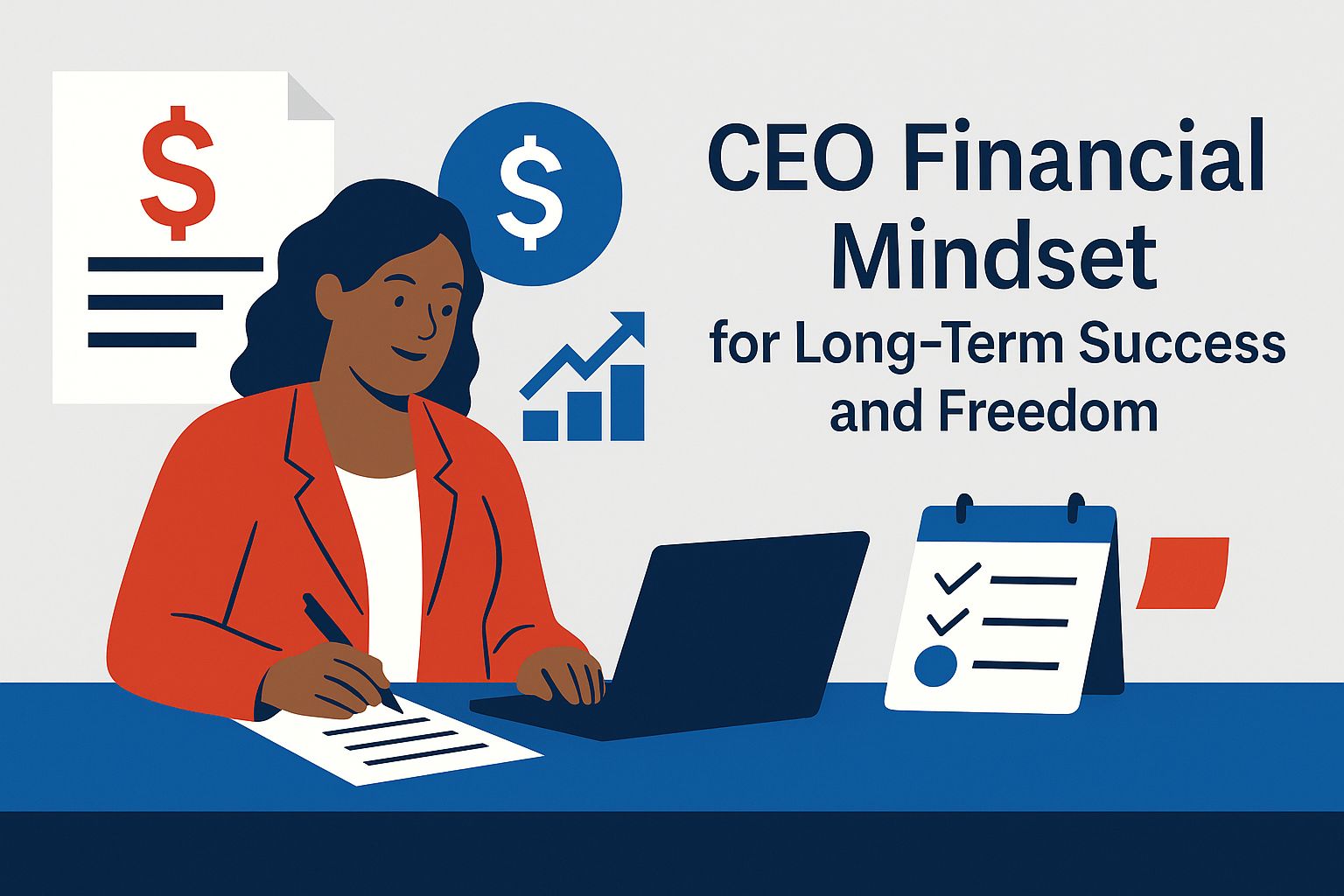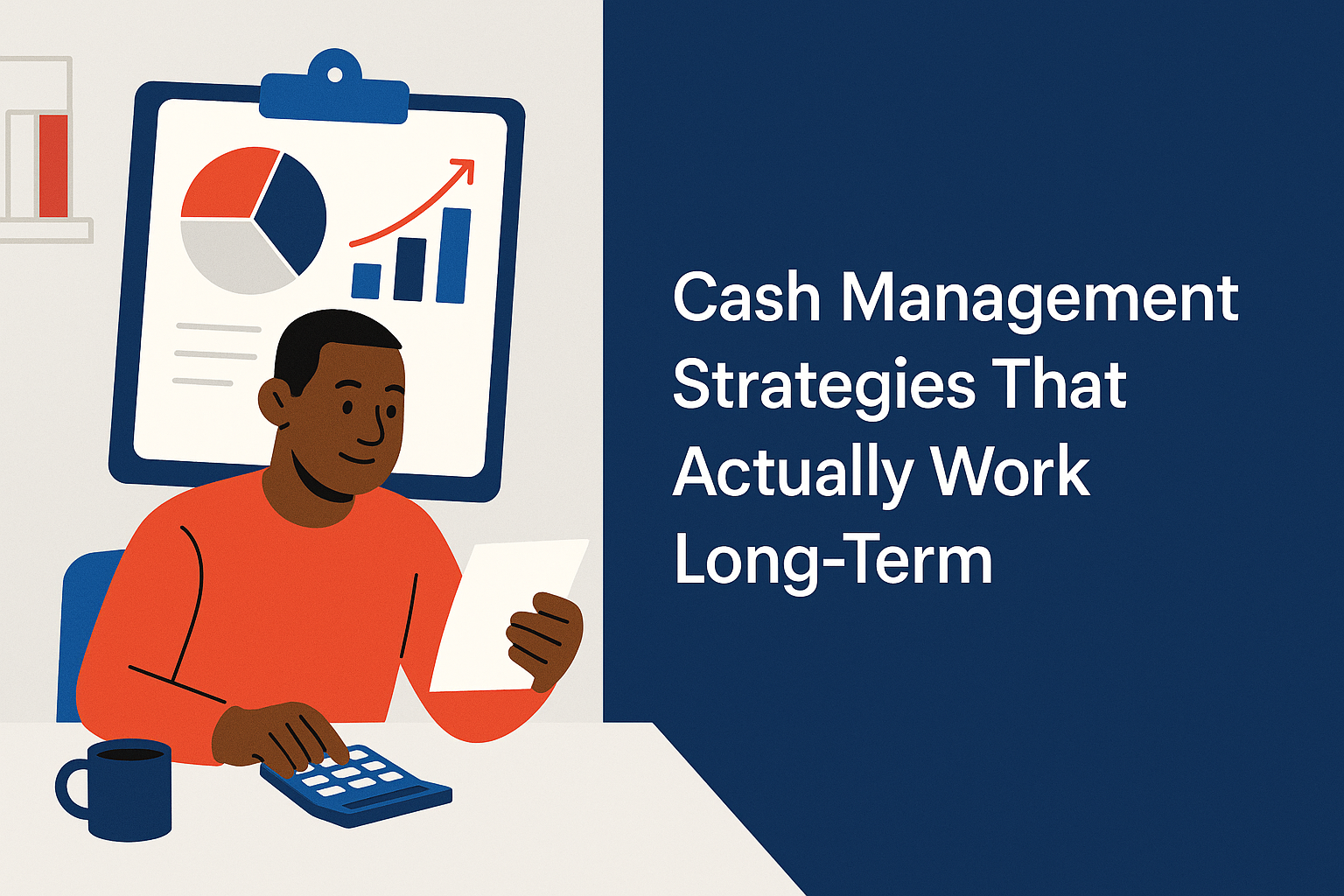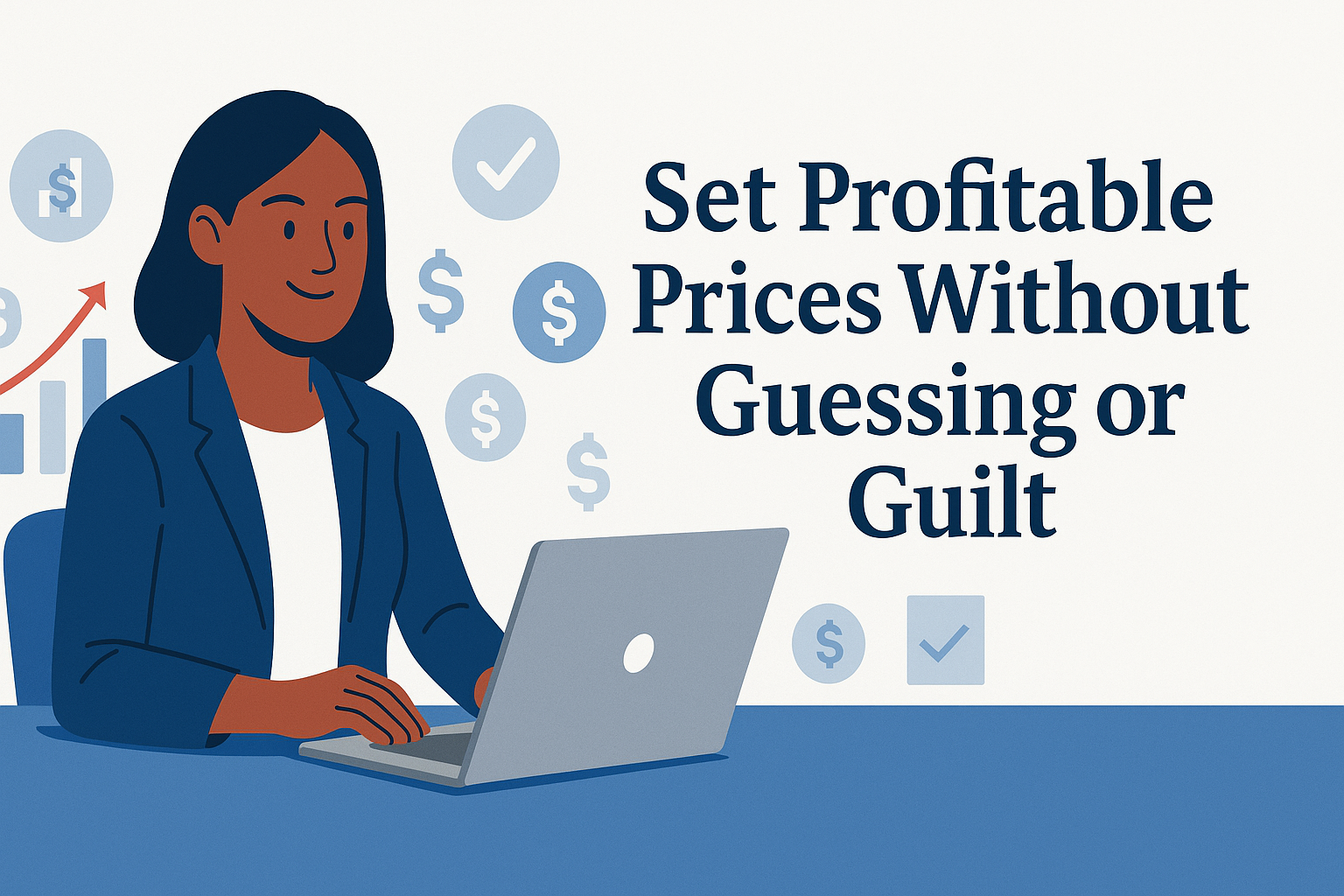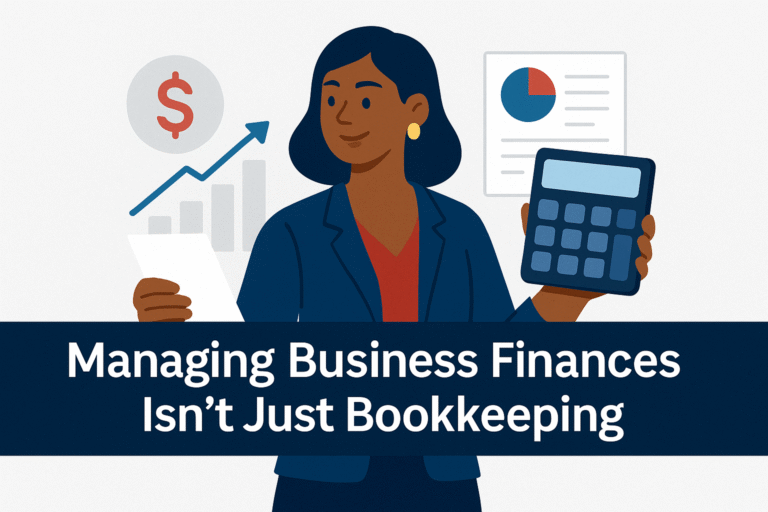Financial Freedom Fridays
I’ve been thinking about profit sharing lately—specifically, how a profit sharing plan for small business teams might help create more ownership, motivation, and momentum without adding to fixed payroll costs. I haven’t implemented one at Backbone America yet, but I’ve been exploring how it could fit into a small, agile business like mine—and whether it might be a tool worth adding to the execution toolkit.
Most people associate profit sharing with large corporations or big-budget companies, but it’s surprisingly doable (and beneficial) even for small businesses. The key is keeping the structure simple, fair, and tied to real results.
In this post, I’ll walk you through what I’ve learned: how profit sharing works, when it makes sense to consider it, and three simple models you can adapt if you’re ready to align your team’s performance with your business goals.
What Is a Profit Sharing Plan (and Why It Matters)

And for small teams, that message matters.
Here’s why I’m paying attention:
It encourages your team to think like stakeholders, not just task-completers
It gives them a reason to care about outcomes—not just output
It can reduce turnover and increase loyalty without increasing base pay
It fosters long-term thinking, which is essential when scaling a small operation
You don’t need a dozen employees to make this worthwhile. Even if you’re working with two contractors or a virtual assistant, a lightweight profit sharing structure can shift the dynamic from transactional to team-oriented.
When (and Why) Small Businesses Should Consider Profit Sharing

That’s when the concept of profit sharing came onto my radar. At the time, I didn’t move forward with it. I was still unclear on how it would work, and I’d read mixed opinions about performance-based pay—especially in marketing roles.
But one thing stuck with me: the concept of rewarding team members when the business as a whole succeeds. Profit sharing isn’t about penalizing someone for a quiet month or holding back pay if results dip. It’s not a replacement for fair compensation. It’s a bonus structure—a way to say, “When the business wins, we all win.” I liked the idea of us all benefiting and working toward the same goals.
You might be ready to explore a plan like this if:
You’re building a team that contributes meaningfully to your bottom line
You want to reward results, not just hours or presence
You’re scaling, but not ready to lock in higher salaries
You’re trying to build a culture of ownership, not dependence
Profit sharing, when done right, builds trust, encourages long-term thinking, and keeps everyone focused on the same finish line.
3 Simple Profit Sharing Models That Actually Work
There’s no one-size-fits-all model, and I’ve seen some examples that are overly complex or feel arbitrary. If I were to test this in my business, I’d want something simple, transparent, and easy to track. These are the three models that keep coming up in my research:
1. Flat Percentage Model
You set aside a fixed percentage of net profit (e.g., 10%), then split that amount evenly among all eligible team members—regardless of role, seniority, or performance level.
Why I Like It
Simple to calculate and explain:
No complex formulas or performance metrics to track. This makes it easy to implement and communicate—especially for small teams without HR infrastructure.Fosters team unity:
Everyone shares equally in the business’s success, which can encourage collaboration and reduce internal competition.Good fit for overlapping roles:
Works well when team members wear multiple hats or it’s difficult to separate individual impact from group outcomes.- Acknowledges support roles:
Not everyone drives revenue, but that doesn’t mean they don’t impact profits. This model ensures admin, tech, and ops support aren’t overlooked. Quick to deploy:
Because it doesn’t require individual goal-setting or performance reviews, you can start with a spreadsheet and iterate later.
What to Watch Out For:
May feel unfair for high performers:
Team members who contribute significantly more may feel frustrated if they receive the same share as others who contribute less.Doesn’t account for role complexity:
It treats all contributions as equal, which might not reflect the reality of your team structure or expectations.Risk of coasting:
Without performance-based incentives, some team members may do the minimum, knowing they’ll still get a share of the profit pool.Can become problematic as the team grows:
What feels fair with three people may start to feel diluted with eight or ten.
2. Performance-Based Model
How it works:
Profit is distributed based on individual or team performance, using predefined metrics or goals tied to meaningful outcomes—not just task completion.
Why I Like It:
Rewards real contribution:
High-impact team members have a clear path to earning more, which can feel more motivating and equitable than equal-split models.Flexible for different roles:
Supports a range of roles—admin, creative, sales—by linking profit sharing to meaningful, role-specific metrics.Aligns effort with outcomes:
Keeps your team focused on what truly drives the business forward—like revenue, retention, or client success.Encourages ownership:
When goals are clear and rewards are tied to them, team members are more likely to take initiative and problem-solve.
What to Watch Out For:
Requires clear metrics and tracking:
If performance isn’t defined and documented up front, the system can feel arbitrary—or even unfair.May create competition:
If not managed carefully, it can lead to siloed behavior or “me-first” attitudes, especially on small teams.Takes more time to manage:
You’ll need to define performance goals, track them regularly, and revisit them each quarter (or more often).Risk of goal distortion:
People may focus narrowly on their own targets at the expense of long-term strategy or team cohesion.
3. Tiered Milestone Model
How it works:
Profit sharing is triggered only after your business crosses certain profit thresholds. As profit increases, the percentage you share also increases.
Example:
Profit > $25K → Share 5%
Profit > $50K → Share 10%
Profit > $100K → Share 15%
Why I Like It:
Scales with your growth:
You’re not committing to sharing profits until you’ve hit a level of profitability that supports it. That makes it low risk during slower seasons or early-stage scaling.Encourages business-wide momentum:
Everyone is motivated to hit the next profit tier, which can increase collaboration across teams.Flexible and protective:
You’re not locked into a fixed payout rate, so it adapts as your business ebbs and flows.Great for goal-driven teams:
Milestones create clear benchmarks, and progress toward them can be part of quarterly check-ins or dashboards.
What to Watch Out For:
Feels far off for some teams:
If the lowest tier is too high, the incentive may feel out of reach—especially for team members who don’t influence top-line revenue directly.Can be demotivating in low-profit periods:
If no tier is met, there’s nothing to share. Without a baseline incentive, some team members may disengage.Needs careful messaging:
You’ll need to clearly explain how profit is calculated and what triggers each tier, or team members might feel disconnected from the outcome.May overshadow individual effort:
Everyone shares the reward based on company-wide profit, which means individual high-performers may not see a direct return for their specific results.
How to Implement Without HR Complexity
If I were going to roll this out, I’d set up a simple system upfront—so I’m not recalculating or micromanaging every payout. Here’s what I’d set up:
1. Clear Eligibility and Profit Definitions
Who’s included (employees, contractors, or both)?
How is profit calculated (net, gross, after taxes)?
How often is it reviewed (monthly, quarterly)?
2. Use Simple Tools
This can live in:
A shared Google Sheet with quarterly updates
Your accounting software (like Zoho Books or QuickBooks)
A bonus-friendly payroll tool like Gusto
You don’t need enterprise software to make this work—you just need consistency.
3. Document and Communicate
This is where most plans fall apart. The more clearly you outline how, when, and why the plan is applied, the more your team will trust it—and buy in. I’d want this built into onboarding, quarterly planning, and any compensation conversations.
Profit Sharing as a Culture Tool (Not Just a Bonus)
Here’s what’s become clear to me as I’ve explored this: profit sharing isn’t just about money. It’s about execution culture.
When done well, it reinforces everything I already teach through Backbone America:
Lead with clarity
Align incentives with action
Create systems that help you step back, not stay stuck
It also fits beautifully into a 90-day planning cycle, especially if you’re already using check-ins, dashboards, or goal-tracking tools. Your team sees where the business is going—and they know how their actions contribute to moving it forward.
Share the Wins, Build the Culture

Whether you’re ready to implement one of these models now or you’re just gathering ideas for the future, the takeaway is this:
Make your rewards align with your results
Make your systems reflect your values
And make your wins shared—because shared wins scale
Want to Stay on Track with Your Profit Sharing Goals?
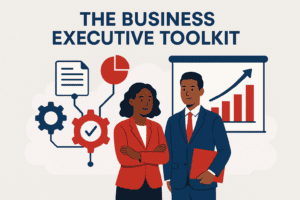
A profit sharing plan for small business teams only works when it’s supported by strong systems—clear goals, consistent follow-through, and visibility into how your business is actually performing. Whether you’re rolling out a plan now or just preparing for the future, you need a framework to keep everything aligned.
That’s where the [Business Executive Toolkit] comes in.
It’s a collection of planning and accountability tools designed to help small business owners:
Set and manage quarterly business goals
Build execution habits into weekly and daily workflows
Track priorities that support growth, including profit sharing
Lead with structure—without micromanaging or burning out
Use it to support your profit sharing efforts, but also to stay focused on all the other systems that make your business sustainable.
If you’re serious about building a business where rewards follow results, this toolkit will help you get—and stay—organized.


